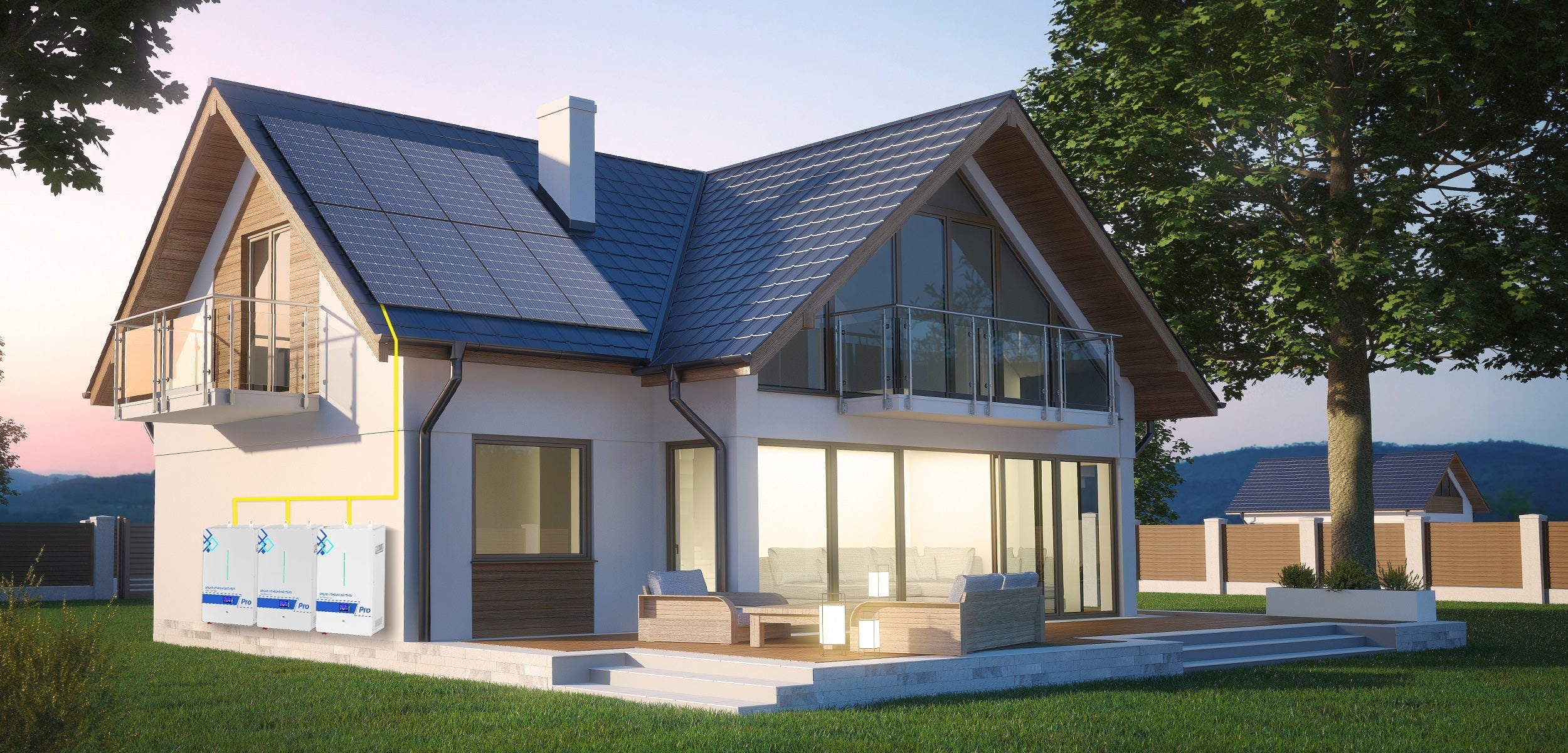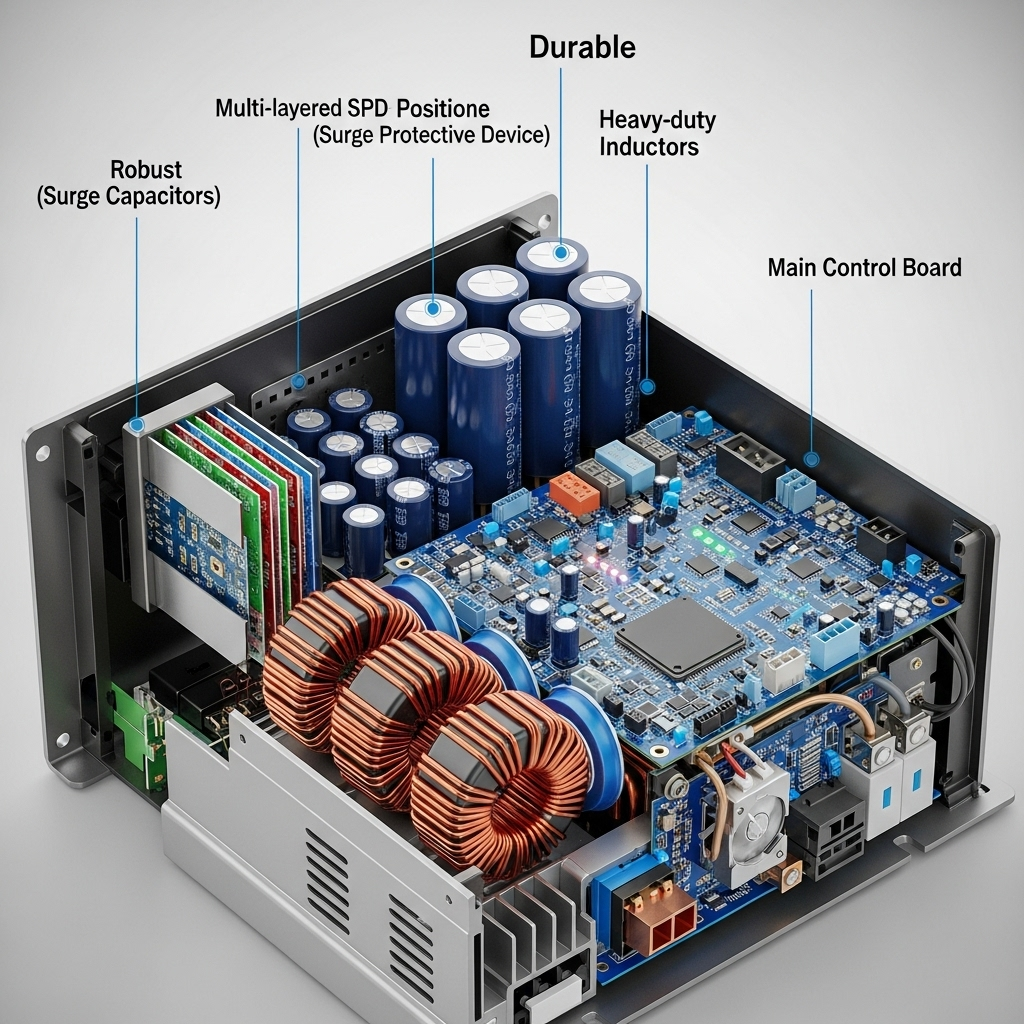Choosing a home energy storage system (ESS) involves looking past simple peak power ratings. True performance lies in the details—specifically, in the efficiency curves and Total Harmonic Distortion (THD) benchmarks. These data points reveal how a system operates in real-world conditions, affecting both your energy savings and the health of your home appliances. Understanding this data empowers you to select a system that is not only powerful but also genuinely efficient and reliable.
Understanding Efficiency Curves: More Than Just a Peak Number
An inverter's efficiency is not a single, static number. It fluctuates based on the amount of power it's handling at any given moment. This relationship is captured in an efficiency curve, a critical tool for assessing a home ESS.
What an Efficiency Curve Reveals About Your ESS
An efficiency curve plots the inverter's efficiency against its operational load. Most manufacturers advertise the 'peak efficiency,' which is the highest point on this curve. This peak is often achieved when the inverter is running at a specific, optimal capacity—perhaps 50-75% of its maximum rating. For a typical household, however, power consumption varies greatly throughout the day. Your system will spend significant time at lower loads, such as overnight when only a few appliances are running. Part-load efficiency, or how well the system performs under these lighter loads, is often a more important indicator of real-world energy savings. Another critical factor is no-load power consumption, the energy the inverter uses just to stay on, which can quietly drain your stored power.
Analyzing Real-World Efficiency Data
Consider two different systems. One may boast a higher peak efficiency, but if its performance drops sharply at lower loads, it could be less effective for your home than a system with a slightly lower peak but a flatter, more consistent curve. A detailed look at the ultimate reference for solar storage performance shows that metrics like round-trip efficiency are vital. This metric accounts for energy losses during both battery charging and discharging, giving a more complete picture of economic value. Let's compare two hypothetical inverters to illustrate this point.
| Load Percentage | Inverter A Efficiency | Inverter B Efficiency |
|---|---|---|
| 10% Load | 88% | 92% |
| 25% Load | 93% | 94% |
| 50% Load | 96% | 95% |
| 75% Load | 97.5% | 95.5% |
| 100% Load | 97% | 95% |
| No-Load Consumption | 25W | 10W |
In this example, Inverter A has a higher peak efficiency (97.5%). Inverter B, however, performs better at lower loads and has significantly lower no-load consumption. For a home that spends many hours in low-power states, Inverter B would likely deliver greater overall energy savings.
Total Harmonic Distortion (THD): The Benchmark for Power Quality
Beyond efficiency, the quality of the power your ESS produces is paramount. Total Harmonic Distortion is the primary metric used to measure this quality, ensuring the electricity is safe for your sensitive electronics.
 5%) - Distorted Power'. Modern, sleek, infographic style.' data-negative-prompt='cartoon, unrealistic, blurry' alt='Illustration comparing a clean low THD sine wave to a distorted high THD sine wave.' />
5%) - Distorted Power'. Modern, sleek, infographic style.' data-negative-prompt='cartoon, unrealistic, blurry' alt='Illustration comparing a clean low THD sine wave to a distorted high THD sine wave.' />What is THD and Why Does It Matter for Your Appliances?
Total Harmonic Distortion measures how much the AC waveform produced by an inverter deviates from a perfect sine wave. In simple terms, it's a measure of 'power cleanliness.' High THD signifies 'dirty' power, which can be harmful to modern electronics. Devices with microprocessors, like computers, smart TVs, and even modern refrigerators, are designed to run on clean power. High THD can cause them to run hotter, make audible buzzing sounds, behave erratically, or even fail prematurely. Industry standards generally recommend a THD of less than 5% for sensitive applications.
Interpreting THD Benchmarks in Home ESS
When evaluating a home ESS, look for a THD rating below 5%, with premium systems often achieving less than 3%. A lower number is always better. It is also important to know if this rating is maintained across different load levels. A quality inverter will produce clean power not just at its optimal load but also at the low and high ends of its operating range. This ensures all your appliances are protected, no matter your current power consumption.
The Interplay Between Efficiency, THD, and System Stress
Efficiency, power quality, and the system's ability to handle stress are deeply interconnected. A weakness in one area often indicates a potential problem in another, affecting the overall resilience and longevity of your ESS.
How Poor Efficiency Can Impact Power Quality
Inverters operating far outside their optimal efficiency range can struggle to maintain a clean sine wave, leading to higher THD. This is particularly common in oversized systems that spend most of their time at a very low percentage of their total capacity. In this state, the system is not only inefficiently converting power but may also be producing lower-quality electricity. This highlights the importance of correctly sizing an ESS for your specific needs rather than simply choosing the largest available option.
Surge Handling Capabilities and System Resilience
Surge capacity refers to an inverter's ability to deliver power far beyond its continuous rating for a short period. This is essential for starting high-demand appliances with motors, such as air conditioners, well pumps, or power tools. An inverter with robust surge handling is typically built with higher-quality components. These durable components not only manage power spikes but also contribute to maintaining stable efficiency and low THD under stressful conditions. As noted in the Electricity Storage Valuation Framework, the ability of a storage system to provide such ancillary services adds significant value and resilience to the grid and the home.
Making an Informed Decision with Data
To truly compare home energy storage systems, you need to look beyond marketing claims and analyze the performance data. Knowing what to ask for is the first step toward making a sound investment.
Key Data Points to Request from Manufacturers
When researching an ESS, request a complete data sheet that includes more than just the basics. A comprehensive evaluation depends on having access to the right information. Focus on these key metrics:
- A full efficiency curve graph or data table showing performance at various loads (e.g., 10%, 25%, 50%, 75%, 100%).
- THD ratings at different load levels, not just a single best-case number.
- No-load (or standby) power consumption in watts.
- Peak and surge power ratings, including the duration (in seconds) they can be sustained.
Beyond the Spec Sheet: Certifications and Real-World Performance
Certifications from recognized bodies like UL or IEC provide a baseline assurance of safety and performance. They confirm that a product has been independently tested to meet established industry standards. Furthermore, the broader context of the global energy transition underscores the importance of reliable technology. The push toward a sustainable future, as outlined in reports like the IEA's Net Zero by 2050, relies on the deployment of high-performing and durable distributed energy resources like home ESS.
Final Thoughts on System Performance
Moving beyond peak ratings to analyze efficiency curves and THD benchmarks is fundamental to selecting a superior home energy storage system. This data-driven approach ensures you invest in a solution that provides clean, stable power, maximizes your energy savings, and operates reliably for years. By prioritizing real-world performance metrics, you equip your home with a resilient energy hub ready for the demands of modern living and a step toward true energy independence.
Frequently Asked Questions
What is a good efficiency rating for a home ESS?
A good round-trip efficiency is typically above 85-90%. It is more important, however, to examine the full efficiency curve. This shows how the system performs at the various load levels your home experiences daily, which gives a much better indication of real-world savings.
Can high THD really damage my electronics?
Yes, sustained exposure to high Total Harmonic Distortion (generally over 5%) can cause sensitive electronics to malfunction, run hot, and have a shorter lifespan. It can manifest as humming sounds from audio equipment, flickering in LED lights, or unexpected resets in computers.
Is a bigger inverter always better for surge handling?
Not necessarily. While a larger inverter will have a higher surge rating, oversizing it significantly can lead to poor efficiency and potentially higher THD during normal, low-load operation. The goal is to match the inverter's capabilities to your home's specific load profile, including the predictable surges from major appliances.





Leave a comment
All comments are moderated before being published.
This site is protected by hCaptcha and the hCaptcha Privacy Policy and Terms of Service apply.